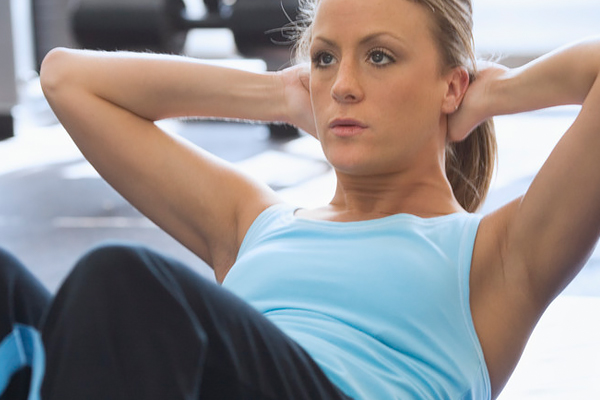
The pelvic floor has become a hot topic lately—common on the internet, talk show chatter and among friends, but what does it mean? The pelvic floor is a group of muscles covering your entire perineum (or bottom)—from pubic bone to tailbone and sit bone to sit bone. It’s located at the base of the pelvis and plays an important role in supporting your spine and organs and controlling urine flow, the bowels and sexual satisfaction! Not a small job for a group of muscles that is typically ignored.
So how do we find these muscles?
Men can feel their pelvic floor muscles tighten if they try to stop the flow of urine; this will also create movement in the penis.
In women, the vaginal and rectal canals should feel tight; you should feel a “drawing up toward the head” if your efforts to flex these muscles are effective. You should be able to feel this “drum” of muscle tighten while standing without having to hold your breath, squeeze your buttocks, raise your eyebrows or curl your toes! If you can hold it, that’s even better. A healthy pelvic floor will automatically tighten when you cough, sneeze, jump or lift. If not, this indicates a problem and activities like running, jumping and laughing could mean trouble.
Why is pelvic floor fitness important?
To ensure a healthy back and pelvis, this muscle group must be activated and engaged. A fit pelvic floor is your foundation for proper body mechanics and initial movement from periods of rest to standing or activity. When you work towards strengthening your pelvic floor, you’ll start to experience additional benefits that you didn’t expect, such as: a stronger back; better digestion; control of urges and leakage; and a more comfortable pelvic girdle.
Tips to get started
• Start by trying to identify the muscle when standing: if not, try sitting. No? Try lying down.
• Once you locate it, see if you can hold it five seconds, how about eight or ten seconds?
• Practice at the level you find there is a contraction followed by a relaxation up to 10 seconds.
• Try starting with roughly 30-50 contractions per day by performing sets at predictable, planned moments.
• Slowly work toward being able to feel these muscles when you move.
Use it or lose it
Yep, like any muscle, if you don’t use it you lose it. So…use it! Don’t underestimate the power of the pelvis. It brings great sexual satisfaction, bowel regularity, successful control of bodily functions and support for spinal health, plus it offers a general sense of well-being.
When working out your mind and body, don’t forget to include your pelvic floor; it will thank you many times throughout the day.
Want to learn more?
If you have questions about whether you could benefit from pelvic rehab, call Holland Hospital Rehabilitation Services at (616) 355-3910. Our staff can answer your questions and help determine if pelvic therapy is right for you. Don't wait to start feeling better when you have resources surrounding you!